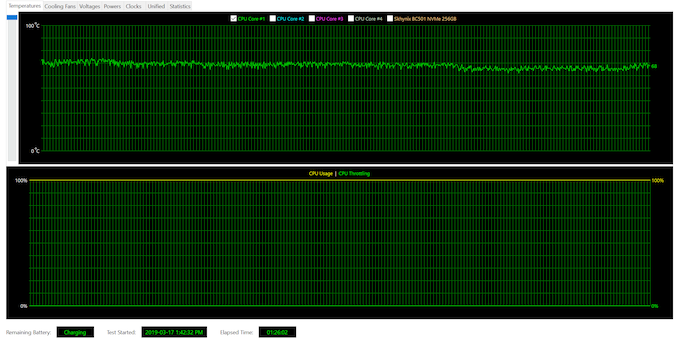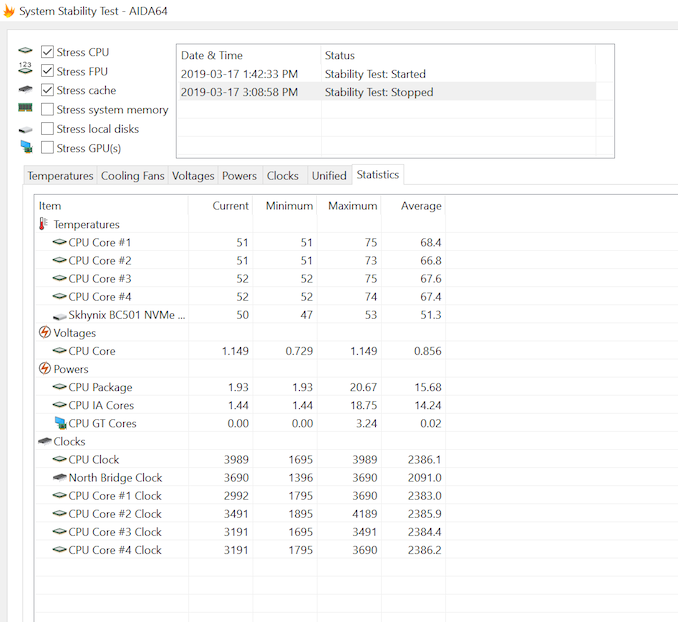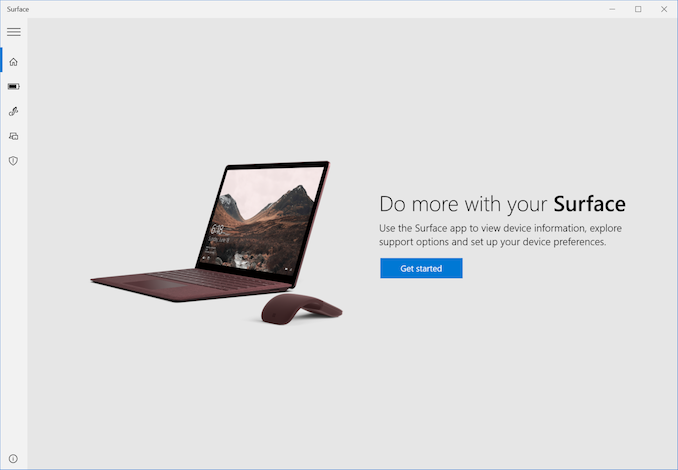The Microsoft Surface Laptop 2 Review: Surface Essentials
by Brett Howse on March 28, 2019 8:00 AM EST- Posted in
- Laptops
- Microsoft
- Surface
- Surface Laptop
- KBL-R
- Surface Laptop 2
Wireless
Everyone talks about the lack of USB-C on Surface, but the really strange question is why does Microsoft still rely so heavily on Marvell for their wireless solutions? Laptop wireless has very nearly become a one-horse game, with Intel being the only major player who continues to update their products annually. As such, the Marvell AVASTAR in the Surface Laptop 2 is just more and more out of date. It was never a great solution to start with, so it’s very odd that they continue to use it all these years later.

Intel’s latest 9260 card is really the wireless adapter to beat in the PC space, offering 160 Mhz channel support, MU-MIMO, and the industry’s best drivers. The good news for Microsoft is that the Marvell solutions have been getting more reliable with some driver updates, but they just don’t offer the level of performance or reliability.
Audio
Microsoft offers an interesting approach to audio in the laptop by placing the speakers underneath the keyboard deck. They refer to this as Omnisonic Speakers, and the result is a win for Surface. You can detect a change in pitch if you put your hands right over the keyboard, but under normal typing there isn’t any noticeable reduction in audio. As a thin and light laptop, don’t expect great things in terms of dynamic range, but at 100% volume the speakers are loud and crisp. Maximum SPL recorded was about 82.3 dB(A) measured one inch over the trackpad.
Thermals
The bane of any thin and light laptop is dissipating heat, so the Surface Laptop 2 was run at 100% CPU load for over an hour to see how it could cope. The Core i7-8650U has a nominal TDP of 15 Watts, although thanks to SpeedShift, on short workloads it can ramp up to over 30 Watts in some devices. In this case, Microsoft seems to have set the PL2 level to about 20 Watts.
We ran the Surface Laptop 2 on a stress test at 100% load for over an hour to see if the device would throttle over time. The answer there is no. Over the hour, the system was able to get rid of enough heat that the temperatures on the CPU never got very high at all. The average temperature over the hour was about 68°C for the duration, and CPU power was right around the 15 Watt level. Maximum power draw was 20.67 Watts right at the start of the test, until the PL2 limit was reached and the device moved into its long-term PL1 load.
The laptop fan never got very loud either, coming in right around 43-44 dB(A) measured one inch of the trackpad, and the Surface Laptop never got too warm to the touch. There’s enough cooling to get the job done without making too much noise.
Software
As a Surface device, Microsoft ships a clean image, or as clean as Windows is these days anyway. The real change here compared to the original Surface Laptop is that Microsoft no longer ships their laptop with Windows 10 S, since the S is now just a feature of Windows. That means you don’t have to unlock all the features anymore, which is good.
The idea behind Windows 10 S was noble. For those not sure what Windows 10 S was, it was a version of Windows 10 that only allowed applications to be installed from the Windows Store. The security benefits here are real, so you can see why they’d want to offer this, but the company has made the right decision in just allowing an S-Mode in Windows 10 itself.
The reality of Windows computing though is that the Windows Store doesn’t offer everything you need, so installing programs is a necessity, so this change is very much welcome. You can get the Surface Laptop with either Windows 10 Home or Pro.













59 Comments
View All Comments
Manch - Monday, April 1, 2019 - link
True no need to fanasize. Just look at Anands bench. Intel has 2 8 series 6C/8T. One cost 100$ more and has a 100mhz base clock bump over the 2k series Zen. Boost clock is also higher. They trade blows but the 2k series zen wins more than it loses. Then look at the 8086 which is double the price and for double the price it beats the 2k series Zen. Fair enough. Looking at the benchmarks, the key gake away is as I said earlier, Intel has the speed still and its enoigh to offset the efficiency gains of Zen's SMT. Unless Intel is holding back soemthing good, the 3rd series Zen will take the Rchitecture from trading blows and winning some to handing out L's.eddman - Thursday, March 28, 2019 - link
What do you mean by "effective"?mr_tawan - Thursday, March 28, 2019 - link
In the other hand, if I wait for half a year and found that the CPU I bought is not much better comparing to the ones available 6 months before, I'd be very disappointed.That is something happened to me before.
That said, I don't think this will be the case for Ice Lake CPUs.
tipoo - Thursday, March 28, 2019 - link
Hopefully that's what they were waiting on for a redesign with USB C/TB3maus92 - Thursday, March 28, 2019 - link
I replaced a MacBook with this machine. The MacOS was having issues with backups and reliable / persistent internal network connections, so this purchase is an experiment. So far, so good. My only complaint is the trackpad - the one on the MacBook was far superior.Eletriarnation - Thursday, March 28, 2019 - link
A bit of a nitpick, but I think this statement in the first page isn't 100% correct:"...16 GB, which happens to be the maximum supported by Intel’s current U-series processors."
This limitation probably only applies to DDR3, as ark.intel.com advertises a maximum of 32GB and DDR4 support for these models too.
Ryan Smith - Thursday, March 28, 2019 - link
To be clear, that passage is solely talking about LPDDR3. Which is why it's mentioned as such in the full sentence."models ship with a minimum of 8 GB of LPDDR3, with high-end and upgraded models increasing that to 16 GB, which happens to be the maximum supported by Intel’s current U-series processors."
Gunbuster - Thursday, March 28, 2019 - link
FIFY: "The Surface Laptop 2 is built out of glue"Should mention nothing is serviceable so you better buy the extended and accidental damage warranty and plan on that "accident" when the battery degrades to 60% in true surface style.
Irata - Thursday, March 28, 2019 - link
Small correction:The article says "Model Tested: Core i7-8650U 8GB 256GB $1299", however further down under pricing, you see:
"256 GB Intel Core i7 with 8GB of RAM: $1599"
Ryan Smith - Thursday, March 28, 2019 - link
D'oh. Fixed. Thanks!